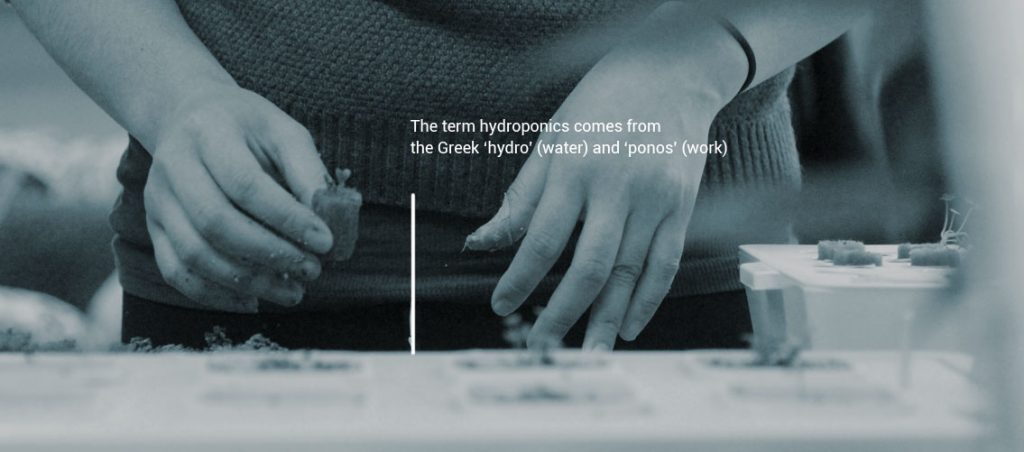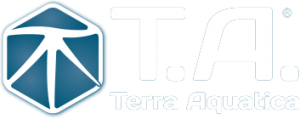What is hydroponics?

The term hydroponics comes from the Greek ‘hydro’ (water) and ‘ponos’ (work). It was coined to describe a form of culture where a nutrient solution does the “work” of bringing nutrients directly to your plants, as opposed to “traditional” gardening where bacteria and fungi break down organic materials, releasing mineral ions, which are then made available to your plants through water present in the soil.
Either way, plants only consume mineral ions for their primary nutrition, not complex organic molecules the way we do. So, Hydroponics isn’t a totally different, or ‘un-natural’ way to grow: all plants, whether growing in purely organic potting compost, or a 100% mineral hydroponics setup with no soil or substrate at all, get their nutrition from minerals in water. The difference is that normally in Hydroponics (and in all T.A systems), the water used is re-circulated continuously, so the only significant losses are through use by the plants, and periodic reservoir water changes.
But whilst most hydroponic systems keep roots continuously wet, water is not the real key to successful hydroponics: oxygen is. You may know that overwatering is one of the most common problems with potted plants; this is because saturated, waterlogged compost stops air from reaching the roots, and like the rest of the plant, roots need oxygen to survive. Well designed hydroponic systems focus heavily on oxygenation. The provision of perfectly oxygenated solution, with the right nutrients, creates the huge increases in yield that hydroponics offers over soil based cultivation: all T.A systems deliver excellent oxygenation and nutrient solution circulation.
So, if you are used to growing in soil, any of the systems in our catalogue offer, if used properly, the potential to massively increase yield, without sacrificing quality.
Whilst hydroponics allows farms to grow the tasteless tomatoes you often see nowadays by cost saving on vital nutrients, it also, if using high quality nutrients such as the T.A range, allows the production of higher volumes of extremely high quality food and plant products, with all the micro and sub-micro nutrients found in the best organic produce, in a shorter time, and with far less waste, especially of water, than “traditional” soil based culture.
Terra Aquatica offers a complete spectrum of approaches to hydroponics: from the world leading TriPart® mineral range and professional GrowStream® systems, to our uniquely clean and pure Organic range and easily accessible Ebb&Grow® system, our range is proven to deliver exceptional results.
If you are already familiar with hydroponics, our systems offer better built, better performing ways to grow, and our nutrients deliver better results, with less add-ons and extras than any other brand. If you are new to hydroponic growing, we offer safe and easy ways to try the concept.
All our products come with instructions for use, details on nutrient schedules can be found here and there is a wealth of information available on the internet and elsewhere to guide you through beginning in hydroponics. But we strongly recommend that anyone starting out invests in a reputable guide book to have on hand. “Hydroponics for everybody” by William Texier, is available online, and covers everything you need to know to grow hydroponically, from beginner to professional level, but here are the T.A basics for successful hydroponics:
- Environment is everything: Too cold, too hot; too much or too little airflow will ruin a grow: get advice from local growers, or retailers on the best set-up for your area.
- Know your water: If you have hard or soft water use the appropriate formulation of nutrients. “General” nutrients that “work” in either water can be a compromise with too much Calcium for hard water, and too little for soft.
- Get decent metering: pH and EC are vital criteria for managing your nutrient solution (EC less so in Organic hydroponics: see Bioponics/below/on the next page). pH shows how acidic or alkaline your nutrient solution is, and EC (electrical conductivity) gives a general guide to how much nutrient is in your solution. We sell inexpensive and accurate liquid pH test kits, and your local shop can supply affordable EC and pH meters.
- There is no “ideal” pH level: all plants prefer different levels, and at any given pH uptake of some minerals is better, others worse. Our advice is to stay on the lower side of the general range pH 5.5 to 6.2, and to check EC and pH daily. Small fluctuations are normal, large / rapid changes are not.
As to EC, we recommend levels for each product and each stage of growth in our feed charts, but as a rule, less is more: chasing very high EC levels generally does not increase yield and stresses plants. If you do want to experiment go slowly and if your plants show signs of stress reduce, your EC levels.

